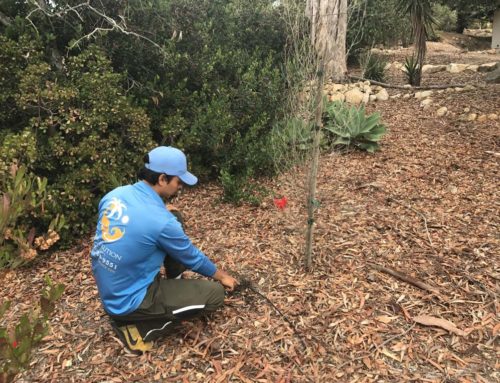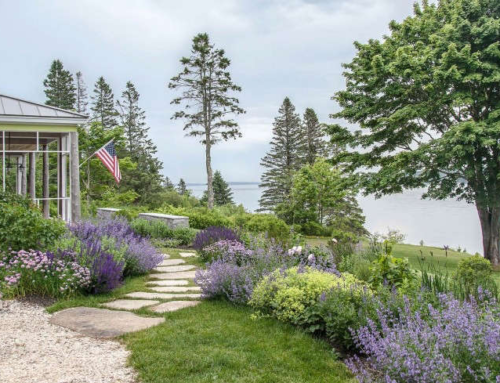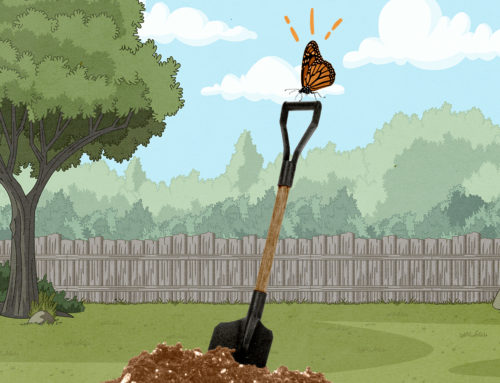Eco-Friendly Landscaping Advice for Homeowners

When you own a home, your yard is a source of pride. However, a keeping a pristine lawn comes at a cost. Not only does a homeowner have to time and money ensuring the grass stays lush and green, but lawns consume a startling amount of water and can have a negative impact on the surrounding ecosystem and environment.
Here are a few facts about lawns in America:
- American lawns occupy up to 30-40 million acres of land.
- Lawnmowers account for up to five percent of the nation’s air pollution.
- More than 17 million gallons of fuel are spilled while refilling lawn and garden equipment each year. That’s more oil than was spilled by the Exxon Valdez!
- American homeowners use 10 times the amount of pesticides and fertilizers per acre on their lawns as the nation’s farmers use on crops.
- The majority of lawn treatments are wasted due to inappropriate timing and application. The liquid and granular solutions then run off and become a source of water pollution.
- 30 to 60 percent of urban fresh water is used on lawns. Much this water is also wasted due to poor timing and application.
Instead of going for the traditional lawn, more and more homeowners are opting to landscape their yard in more ecologically friendly ways. Here are some options for an environmentally sensitive home landscape:
Xeriscaping in Drought Prone Areas
Higher-than-average temperatures and patchy rainfall have led to drought in many parts of America. In fact, several states including South Carolina, Utah, Montana, Idaho, Nevada, California, Washington, and Oregon are finding water to be a diminishing resource. Therefore people living in drought-prone states—and even those who simply want to save money on their water bills—can benefit from “xeriscaping” their yards.
Xeriscaping requires little to no irrigation, so there’s less water used to support traditional landscapes. Plants with similar watering needs are grouped together so water resources can be easily shared. Xeriscaping also favors drought-resistant plants such as succulents and cacti for the appearance of a well-appointed landscape. Mulching is also a key component, one which helps keep moisture in the soil and prevents evaporation. The added benefit of mulch is its ability to suppress weeds and create an attractive canvas for this minimalistic landscape style.
Use Native Plants and Foliage
While native plants aren’t necessarily a part of xeriscaping, most landscape architects and designers look for ways to incorporate natives into their designs. Natives are similar in that they require less water and fertilization, having the ability to grow happily without much human intervention. For these reasons, natives are also generally low maintenance, which is good news for those of us who’d rather relax than do yard work! Native plants, are also beneficial to local wildlife and pollinators, making them a responsible choice in developing your home landscape.
Plant More Trees
Adding trees to your landscape helps in many ways. First, they provide us with oxygen while absorbing carbon, which can offset our own emissions. Trees can take up a great deal of space, too, leaving less room for the temptation of lawns and turf. The shade they provide the rest of your yard helps prevent evaporation, keeping valuable moisture in place for plants.
Because nature trees can add value to your property, be sure to find a landscape company who can provide = proper care for them over the long term. Large shade trees also reduce heating and cooling costs, too, so consider their upkeep as a benefit to your overall budget.
***
If you want to make the earth a better place, a great place to start is your own yard. Lawns require an expenditure of water, particularly in drought-prone areas. Xeriscaping is a great alternative that uses less water. Native plantings, too, can survive without irrigation and routine fertilization. Furthermore, trees are an apt replacement for lawns and can help reduce water needs; they can even lower your home’s heating and cooling bills.







Leave A Comment
You must be logged in to post a comment.